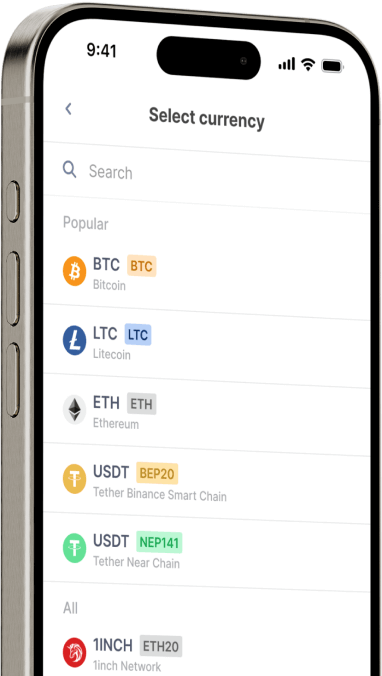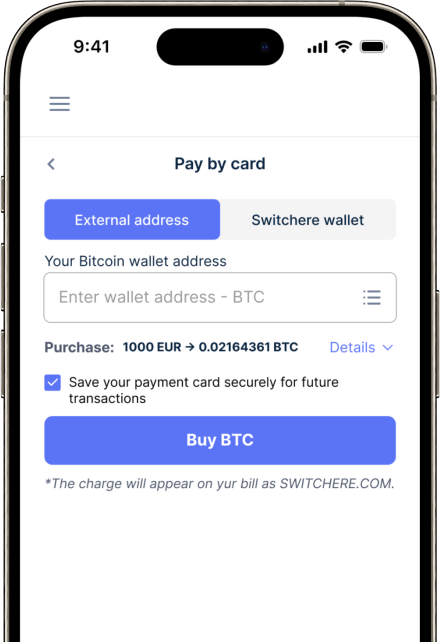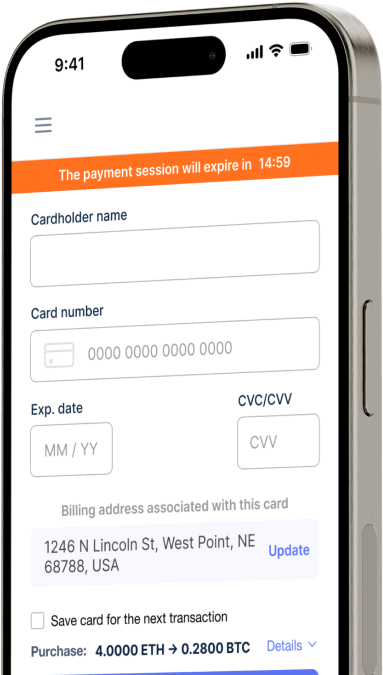Konwertuj
Danish Krone (DKK) na Bancor Network (BNT) natychmiast
Kupuj Bancor Network (BNT) z Danish Krone (DKK) łatwo w Switchere i korzystaj z szybkich, bezpiecznych transakcji.
O
Bancor Network (BNT)
Bancor Network to fundamentalny protokół zdecentralizowanych finansów (DeFi), który umożliwia zautomatyzowany, on-chainowy handel aktywami cyfrowymi. Jako jeden z pierwszych zautomatyzowanych animatorów rynku (AMM), jego główną misją jest rozwiązanie krytycznego problemu dla dostawców płynności (LP): nietrwałej straty. Ten protokół płynności on-chain wykorzystuje system inteligentnych kontraktów, aby umożliwić wymianę tokenów peer-to-peer bez tradycyjnych ksiąg zleceń, mając na celu zapewnienie głębszej i bardziej zrównoważonej płynności w ekosystemie DeFi. Tokenomia sieci jest specjalnie zaprojektowana, aby zachęcać do uczestnictwa, jednocześnie chroniąc kapitał przed zmiennością nieodłączną dla standardowych pul płynności AMM.
Główną innowacją Bancor jest jego unikalna architektura oferująca jednostronne dostarczanie płynności i Ochronę przed Nietrwałą Stratą (ILP). W przeciwieństwie do typowych AMM, które wymagają od LP zdeponowania pary aktywów, Bancor pozwala użytkownikom stakować pojedynczy token. Protokół osiąga to za pomocą swojego natywnego tokena użytkowego BNT, który ma elastyczną podaż. Gdy użytkownik dostarcza pojedynczy zasób, protokół współinwestuje własne BNT, aby utworzyć parę w puli. Ten mechanizm, finansowany z opłat protokołu, napędza ILP, rekompensując LP potencjalną stratę dywergencyjną w czasie i czyniąc yield farming bardziej przewidywalnym. Ta struktura jest kluczowym wyróżnikiem na zatłoczonym rynku zdecentralizowanych giełd (DEX).
Token Bancor Network (BNT) jest kluczowy dla funkcjonowania ekosystemu, służąc jako wspólny zasób rezerwowy w każdej puli płynności. Jako token zarządzania, posiadacze BNT mogą uczestniczyć w BancorDAO, głosując nad kluczowymi aktualizacjami protokołu i zmianami parametrów. Stakowanie BNT nie tylko zabezpiecza sieć, ale także przyznaje użytkownikom udział w opłatach handlowych generowanych przez protokół. Dzięki postępom, takim jak Bancor v3, protokół nadal udoskonala swój model efektywności kapitałowej, umacniając swoją pozycję jako pionierskiej siły w zrównoważonych rozwiązaniach płynności on-chain.
Kup ponad 150 innych kryptowalut za Danish Krone (DKK)
Inne monety za Danish Krone (DKK)
-
DKK do ZRX
-
DKK do 1INCH
-
DKK do AAVE
-
DKK do ACH
-
DKK do ALGO
-
DKK do TLM
-
DKK do ANKR
-
DKK do APE
-
DKK do NFT
-
DKK do API3
-
DKK do APT
-
DKK do ARPA
-
DKK do AUDIO
-
DKK do AVAX
-
DKK do AVAX
-
DKK do AXS
-
DKK do BADGER
-
DKK do BAL
-
DKK do BNT
-
DKK do BAT
-
DKK do BNB
-
DKK do BSW
-
DKK do BSV
-
DKK do BLUR
-
DKK do BONE
-
DKK do CTSI
-
DKK do CELR
-
DKK do CELO
-
DKK do CEL
-
DKK do LINK
-
DKK do CHZ
-
DKK do CHR
-
DKK do C98
-
DKK do COMP
-
DKK do CFX
-
DKK do PEOPLE
-
DKK do CVX
-
DKK do ATOM
-
DKK do CTC
-
DKK do CRV
-
DKK do DAI
-
DKK do DASH
-
DKK do MANA
-
DKK do DENT
-
DKK do DGB
-
DKK do DYDX
-
DKK do XEC
-
DKK do EOS
-
DKK do ETC
-
DKK do ENS
-
DKK do ETHW
-
DKK do FET
-
DKK do FIL
-
DKK do FLOKI
-
DKK do GALA
-
DKK do GNO
-
DKK do ONE
-
DKK do HBAR
-
DKK do HOT
-
DKK do HOOK
-
DKK do ICX
-
DKK do ILV
-
DKK do IMX
-
DKK do INJ
-
DKK do ICP
-
DKK do IOST
-
DKK do IOTX
-
DKK do JASMY
-
DKK do JST
-
DKK do KAVA
-
DKK do KCS
-
DKK do KSM
-
DKK do KNC
-
DKK do LDO
-
DKK do LQTY
-
DKK do LPT
-
DKK do LOOKS
-
DKK do LRC
-
DKK do LUNA
-
DKK do MKR
-
DKK do MASK
-
DKK do EGLD
-
DKK do ALICE
-
DKK do NEAR
-
DKK do XEM
-
DKK do NEXO
-
DKK do NOT
-
DKK do NMR
-
DKK do OKB
-
DKK do OMG
-
DKK do ONT
-
DKK do EDU
-
DKK do OP
-
DKK do OGN
-
DKK do CAKE
-
DKK do PAXG
-
DKK do PENDLE
-
DKK do DOT
-
DKK do POL
-
DKK do QTUM
-
DKK do QNT
-
DKK do RDNT
-
DKK do XRD
-
DKK do RVN
-
DKK do REN
-
DKK do RSR
-
DKK do RLC
-
DKK do RPL
-
DKK do SFP
-
DKK do SHIB
-
DKK do SKL
-
DKK do SXP
-
DKK do STND
-
DKK do STG
-
DKK do XLM
-
DKK do GMT
-
DKK do STORJ
-
DKK do STMX
-
DKK do SUSHI
-
DKK do SNX
-
DKK do USDT (Polygon)
-
DKK do USDT (AVAC)
-
DKK do USDT (BEP20)
-
DKK do USDT (ERC20)
-
DKK do USDT (SPL)
-
DKK do USDT (NEP141)
-
DKK do USDT (FA2)
-
DKK do USDT (TRC20)
-
DKK do USDT (JETTON)
-
DKK do XTZ
-
DKK do GRT
-
DKK do SAND
-
DKK do TFUEL
-
DKK do THETA
-
DKK do RUNE
-
DKK do TON
-
DKK do TUSD (BEP20)
-
DKK do TUSD (TRC20)
-
DKK do TWT
-
DKK do UOS
-
DKK do UMA
-
DKK do UNI
-
DKK do USDC (Polygon)
-
DKK do USDC (SPL)
-
DKK do USDC (OP)
-
DKK do USDC (BEP20)
-
DKK do USDC (AVAC)
-
DKK do USDC (ARB)
-
DKK do USDC (ERC20)
-
DKK do VET
-
DKK do VRA
-
DKK do WAXP
-
DKK do WOO
-
DKK do WLD
-
DKK do WBTC
-
DKK do WMINIMA
-
DKK do XDC
-
DKK do YFI
-
DKK do YGG
-
DKK do ZIL
Jak kupić Bancor Network (BNT)
Często zadawane pytania
-
Jaka jest główna metoda zakupu Bancor Network Token (BNT) za pomocą duńskich koron (DKK)?
Ponieważ bezpośrednia para handlowa DKK/BNT jest rzadkością, główna metoda obejmuje proces dwuetapowy. Najpierw skorzystaj z regulowanej giełdy kryptowalut, która akceptuje depozyty w DKK za pośrednictwem przelewu SEPA lub karty kredytowej, aby kupić główną kryptowalutę, taką jak Ethereum (ETH) lub stablecoin. Następnie przenieś ten cyfrowy zasób na giełdę lub platformę zdecentralizowanych finansów (DeFi), taką jak sam protokół Bancor, aby wymienić go na BNT. Ten proces wykorzystuje bramkę fiat, aby wejść do ekosystemu krypto przed wykonaniem wymiany tokenów.
-
Czy istnieją szczególne procedury zgodności z KYC/AML przy używaniu DKK do zakupu BNT?
Tak. Każda scentralizowana giełda fiat on-ramp działająca w Danii lub akceptująca DKK podlega surowym przepisom KYC (Poznaj Swojego Klienta) i AML (Przeciwdziałanie Praniu Pieniędzy). Będziesz musiał zweryfikować swoją tożsamość, przedstawiając dokument tożsamości wydany przez rząd i ewentualnie dowód adresu. Jest to standardowy środek bezpieczeństwa mający na celu zapewnienie bezpiecznego handlu i zapobieganie nielegalnym działaniom, niezależnie od tego, czy ostatecznie kupujesz BNT, czy inny zasób cyfrowy.
-
Czym jest Bancor v3 i jak ma się to do tokenomiki BNT?
Bancor v3 to trzecia główna iteracja protokołu Bancor, wprowadzająca znaczące aktualizacje w jego architekturze. Ma na celu poprawę efektywności kapitałowej, uproszczenie dostarczania płynności i dalsze wzmocnienie mechanizmu ochrony przed nietrwałą stratą. Tokenomika BNT jest głęboko zintegrowana, ponieważ protokół zarządza podażą BNT za pośrednictwem „Bancor Vortex”, aby wspierać kondycję protokołu, pokrywać nietrwałą stratę i oferować nagrody z automatycznym składaniem dla dostawców płynności, a wszystko to jest zarządzane przez BancorDAO.
-
Co sprawia, że token BNT jest wyjątkowy w kontekście zautomatyzowanych animatorów rynku (AMM)?
Token BNT jest kluczowy dla unikalnego projektu protokołu Bancor, który umożliwia jednostronne dostarczanie płynności. W przeciwieństwie do tradycyjnych AMM wymagających depozytu 50/50 dwóch aktywów, Bancor pozwala użytkownikom na dostarczanie płynności dla pojedynczego tokena. Protokół współinwestuje swój natywny BNT, aby dopasować depozyt, co jest mechanizmem zaprojektowanym w celu łagodzenia nietrwałej straty dla dostawców płynności, co czyni go wyróżniającą cechą w przestrzeni DeFi.
-
Po zakupie BNT, jaki jest najbezpieczniejszy sposób przechowywania tego cyfrowego zasobu?
Najbezpieczniejszą metodą jest przeniesienie BNT z giełdy do osobistego portfela cyfrowego, w którym kontrolujesz klucze prywatne. W celu uzyskania maksymalnego bezpieczeństwa zdecydowanie zaleca się portfel sprzętowy (cold storage). Utrzymuje on klucze prywatne w trybie offline, chroniąc je przed zagrożeniami online, takimi jak hacking. Portfele programowe (hot wallets) są również opcją dla mniejszych kwot lub do interakcji z protokołami DeFi, takimi jak Bancor, ale są bardziej podatne na ryzyka online. Nigdy nie udostępniaj swojej frazy seed.
-
Jakiego rodzaju opłat mogę się spodziewać przy konwersji DKK na BNT?
Proces konwersji zazwyczaj wiąże się z kilkoma potencjalnymi opłatami. Po pierwsze, opłata za depozyt DKK na bramce fiat (np. za pomocą karty kredytowej lub przelewu bankowego). Po drugie, opłata transakcyjna na giełdzie za wymianę DKK na aktywo pośrednie, takie jak ETH. Po trzecie, opłata sieciowa lub za gaz za transfer tego aktywa z giełdy. Wreszcie, kolejna opłata za wymianę (i związana z nią opłata za gaz) na zdecentralizowanej giełdzie lub AMM, gdzie handlujesz aktywem pośrednim za BNT. Zawsze sprawdzaj harmonogram opłat każdej zaangażowanej platformy.




